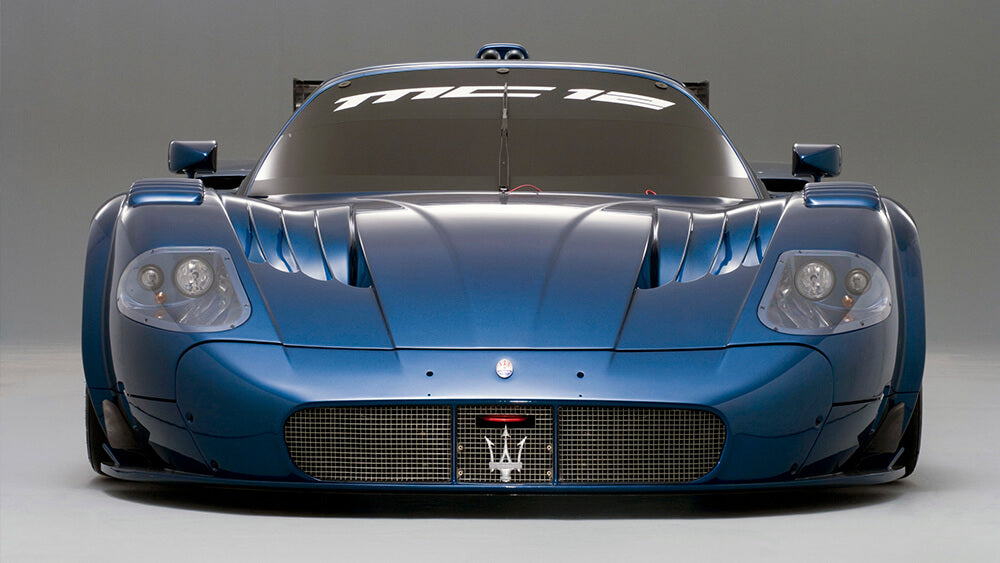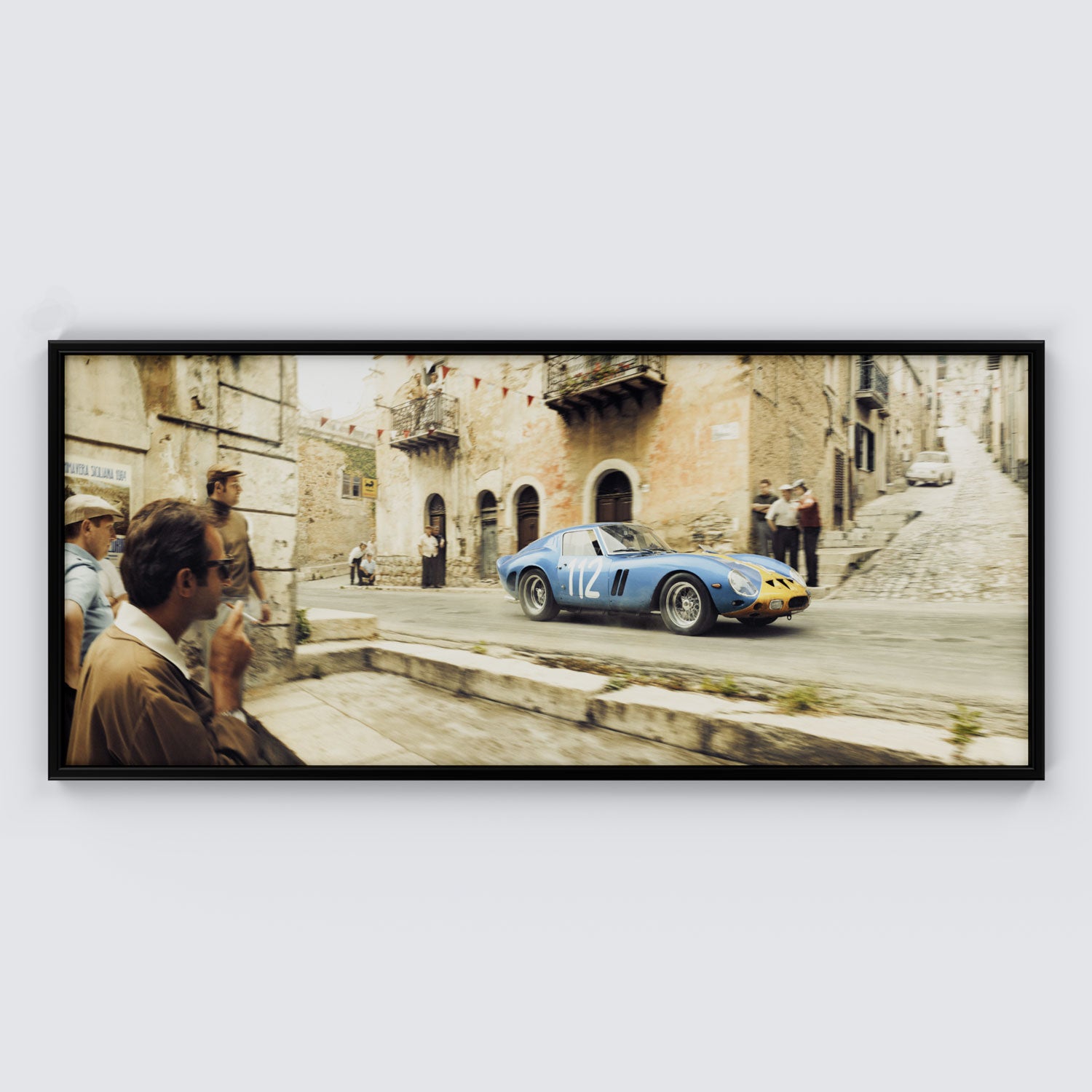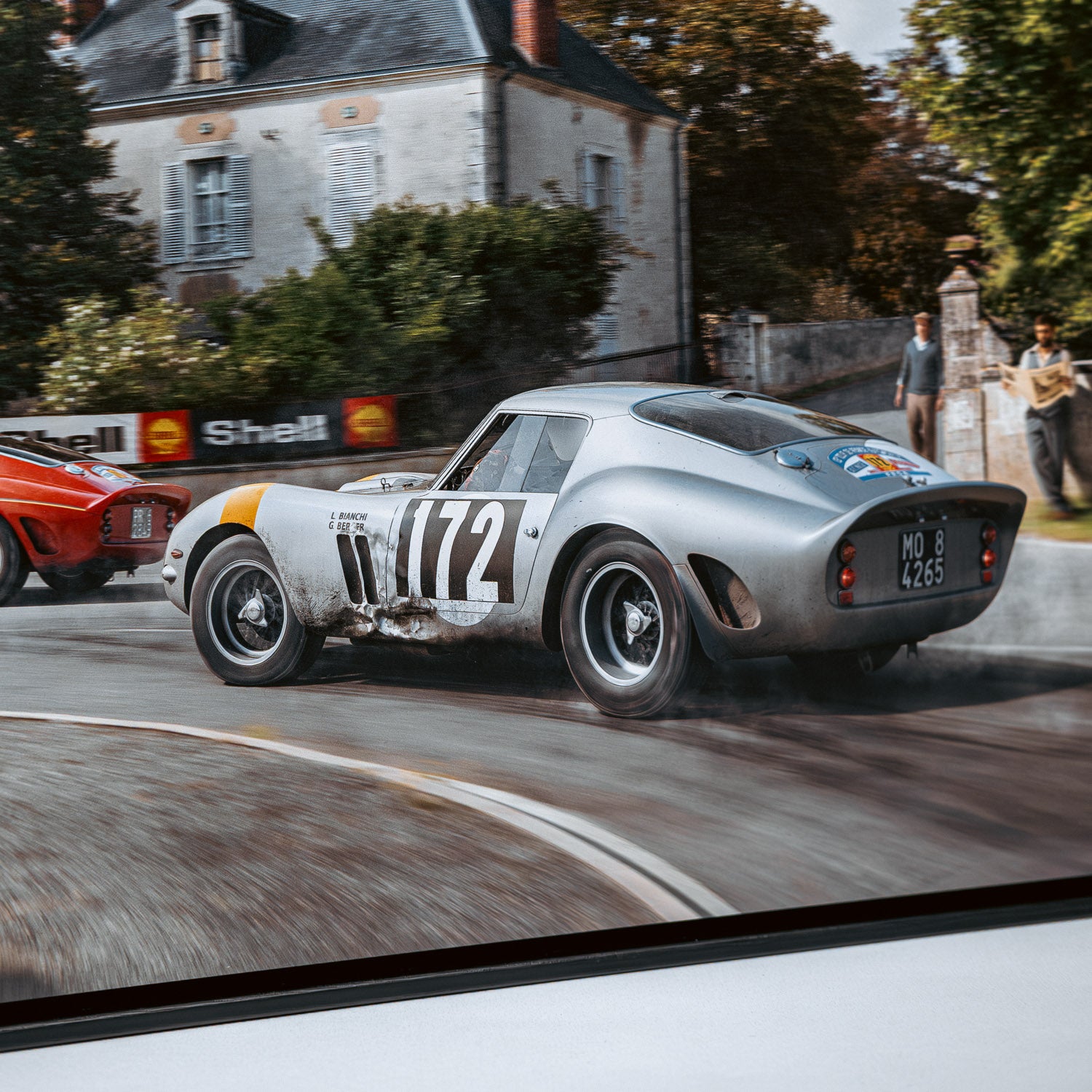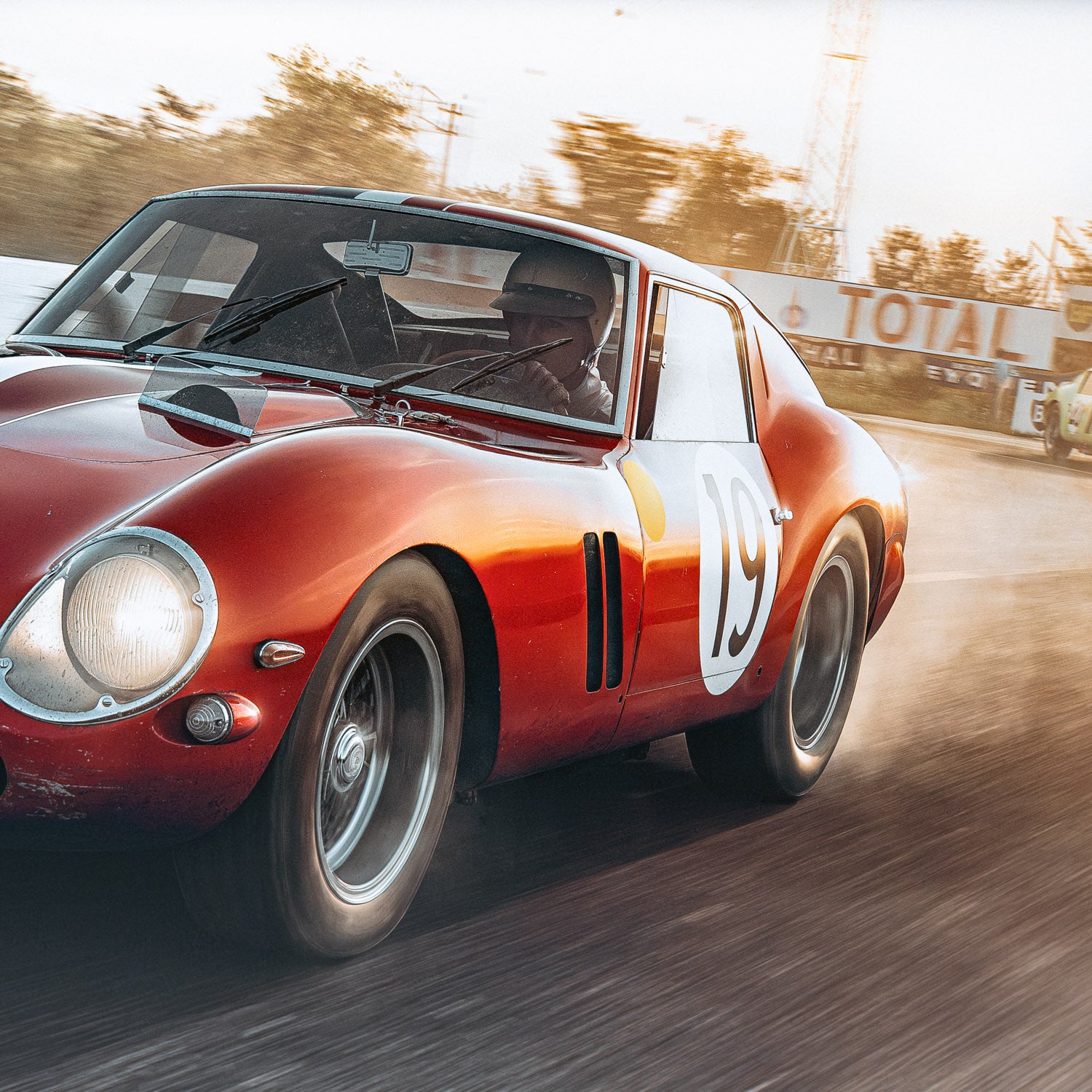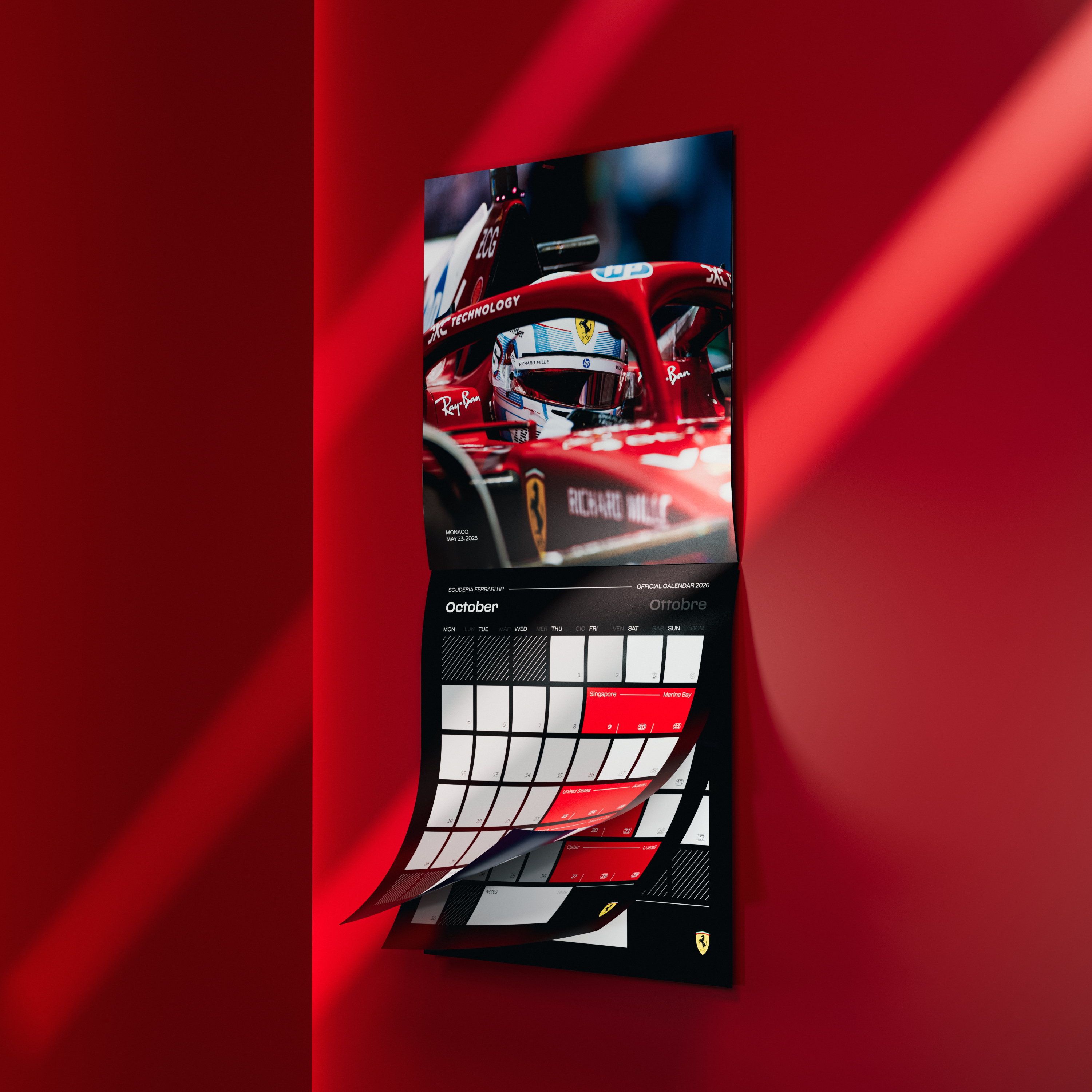Written by Richard Kelley
Introduced in 2020, 16 years after the debut of the Track-Bred MC12, the mid-engine Maserati MC20 has reinvigorated the brand with its impressive sophistication and performance.
Besides being one of the quickest Maserati models to date, the stunning MC20 represents the fresh force that will guide future Maserati models. As expected, that line of new customers is growing as we speak.
The carbon-fibre monocoque MC20 is a clear break from its predecessor, the high-downforce / low-drag aerodynamic silhouette of the competition-aimed MC12.
 Maserati MC12, Chassis no. 15442, in high speeds on a circuit. Image Courtesy: www.motorauthority.com
Maserati MC12, Chassis no. 15442, in high speeds on a circuit. Image Courtesy: www.motorauthority.com
Built entirely of carbon fibre as well, the MC12 put function first and form second. There's no rear window because a roof-mounted air-induction snorkel and its giant plenum sat in that space.
The MC12’s small side mirrors were the only means of checking behind you, though, with a top speed exceeding 205 mph, its driver used it infrequently.
 Maserati MC12, Chassis no. 15442, being showcased at Goodwood FOS. Image Courtesy: Wouter Melissen
Maserati MC12, Chassis no. 15442, being showcased at Goodwood FOS. Image Courtesy: Wouter Melissen
Nearly two decades later, Maserati engineers conceived the new MC20 game plan in just 24 months. The engineers created and tested fully digital versions of the car using virtual dynamics simulators before constructing any prototypes.
Maserati reportedly spent more than 2,000 hours in the Dallara wind tunnel – and more than 1,000 computational fluid dynamics (CFD) studies – to sculpt the MC20 into an aerodynamic work of art.
Most supercars suffer with tacked-on splitters, spoilers, and movable wings. The Maserati MC20 designers avoided all of those, instead creating impressively voluptuous curves around the wheels, a cinched waist, and a roofline that could have been drawn with a single sweep of a pencil.
 Maserati MC20 speeding on a circuit during night. Image Courtesy: Maserati
Maserati MC20 speeding on a circuit during night. Image Courtesy: Maserati
According to Andrea Bruno, Lead Exterior Designer at Maserati, all of the curves and scoops, even the sculpted underbelly, were purposefully engineered to take advantage of managed aerodynamics, including high- and low-pressure areas, to feed air to the engine, brakes, and intercooler – while simultaneously providing low drag (for top speed) and downforce (for stability).
The team's objective with Dallara was to use the same tub for three vehicles: a coupe, a convertible, and a pure-EV variant. All three retain the same architecture and geometry, yet there will be differences in how the build materials are applied.
The MC20's lightweight composite monocoque tub is fitted with independent double-wishbone suspension at all four corners, with semi-virtual steering – twin forged aluminium bottom links and a single top link.
Perhaps the brilliance of the MC20 is most evident with another of Bruno's team's design duality. Take its butterfly doors - while producing plenty of a wow factor, the design also allows the car's ground effects tunnels to increase front downforce while keeping the upper body clear of drag-inducing aero add-ons.
Another set of features includes how the MC20’s engine breathes through vents snuggled away on top of the rear fenders. At the front of the car is a reductively simple interpretation of the iconic Maserati grille, flanked by two discreet vents. Vents on either side of the trunk help define the form of the front fenders.
Maserati’s all-new engine for the MC20 pushes the limits of technical innovation. The 90° 3.0-litre, twin-turbocharged V6 Nettuno engine boasts dual sparkplugs, producing 621 hp and 538 lb-ft of torque. Power is sent to the rear wheels through an 8-speed dual-clutch automated gearbox.
 Maserati MC20 Powertrain Folgore. Image Courtesy: Maserati
Maserati MC20 Powertrain Folgore. Image Courtesy: Maserati
A limited-slip, self-locking, mechanical rear differential is standard. According to Maserati, the 0-60 mph sprint falls in about 2.9 seconds as the coupe runs towards a top speed of 202 mph.
Bridgestone crafted custom tires with an asymmetric tread design for the car so that Maserati could get the most out of its forged alloy double wishbone suspension; this consists of two bottom links and one top and is the same setup at the rear, flipped upside down.
The MC20’s stopping power comes with six- and four-piston Brembo CCM (carbon-ceramic) brakes as standard, while its steering system is an evolution of the Alfa Romeo Giulia.
The high-speed grip is unfailing thanks to the heavy-duty aero channelling underneath the floor. A complex arrangement of vortex generators at the front of the MC20 matched with a hump-shaped floor, increases airflow and helps generate downforce on the front axle. At the rear, a large diffuser with channels of different depths and tuned vertical spoilers loads the rear axle.
 Overhead shot of the Maserati MC20 showcasing its aerodynamic lines. Image Courtesy: Maserati
Overhead shot of the Maserati MC20 showcasing its aerodynamic lines. Image Courtesy: Maserati
The interior of the MC20 is functional and clean – a driver's car that purposefully lacks dramatic styling. The cockpit boasts soft Alcantara, premium leather hides, and artfully placed carbon-fibre trim.
Contrasting stitching adds a splash of visual focus. The driver faces a thick multi-function steering wheel with column-mounted shift paddles.
By far, the most luxurious component is the drive mode selector – its design inspired by a luxury watch and coloured Maserati blue.
The MC20 offers five driving modes (GT, WET, SPORT, CORSA, and ESC OFF), chosen via the Drive Mode selector. Each setting alters engine boost, pedal sensitivity, exhaust note, transmission shifting, suspension damping, and traction control (ESC).
With the MC20 being the first fruit of Maserati’s far-reaching supercar overhaul, we can’t wait to see the bountiful harvest to come.

